In 1997 Euro-popsters Aqua declared that "life in plastic, it's fantastic".
And in 1997 a greater part of humanity would have readily, and unquestioningly, concurred with Aqua that plastic was indeed fantastic. And that plastics offered us an endlessly fantastic, undimmably bright, future.1
But that was 1997.
Last century.
An eternity ago.
And, as so oft, the passage of time has shaken once firmly held convictions and forced fundamental re-appraisals of all that which once seemed so eternal, so certain, so bright. So fantastic.
With the exhibition Plastic: Remaking Our World the Vitra Design Museum, Weil am Rhein, explore the (hi)story of plastics of all ilks and in doing so not only chart the transformations in popular perceptions of plastics over the past 150 years, but also pose questions of our future use of, and our future relationships with, plastics.......
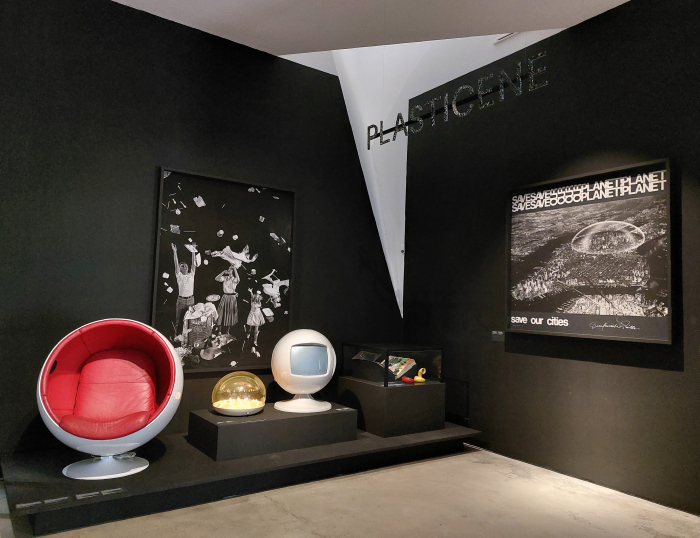
For all that "plastic" is today a popular synonym for petrochemical based synthetic materials, the term derives from the Greek plastikos - readily formable, malleable - and was an adjective long before it became a noun: materials could be plastic long before they were plastic.
Plastic materials such as, for example, horn and ivory which have been used for many a century or more recent materials derived from animal products such as bois durci, shellac or gutta-percha, derived animal products which popularly arose in the second half of the 19th century in context of the increasing industrialisation of the period; and derived animal products with which Plastic: Remaking Our World opens by way of illuminating the path to, a path to, our myriad contemporary synthetic malleable materials.
A path paved by generic semi-synthetic families based around natural materials and regaling in commercial trade-names such as, for example, Parkesine, Crystalate or Erinoid, the latter of which features in Plastic as a garish yellow inlay in an endlessly engaging 1916 smoker's cabinet by Charles Rennie Mackintosh. ¿Mackintosh? ¿Plastic??? And a path which leads, unyieldingly, and as it must, to Bakelite.
Patented in 1909 by Belgian chemist Leo Baekeland, if a material who owes it genesis to a myriad international parents, Bakelite is, inarguably, the most important staging post in the development of our contemporary synthetic plastics, and that not least on account of its heat resistance and inability to conduct electricity, faculties which, for all when combined with its natural shine and noble expression, effortlessly enabled Bakelite to instigate a (more or less) exponential increase in the number and variety of consumer electronic goods in the early 20th century, and thus just at the moment when mass market electricity was becoming a viable thing. As was the closely associated market for consumer electronic goods.
But not just electronic goods, Bakelite's ready formability, ready plasticity, meaning it could be set to most any task, even furniture: Plastic featuring a fascinating 1940s moulded Bakelite seat shell developed by Egmont Arens, a shell that could be formed in just 8 minutes, and which could very well have been the basis for new, industrially produced, synthetic seat shells, could have been a new, ongoing, chapter in the (hi)story of furniture design. Could, had Bakelite continued its upward trajectory.
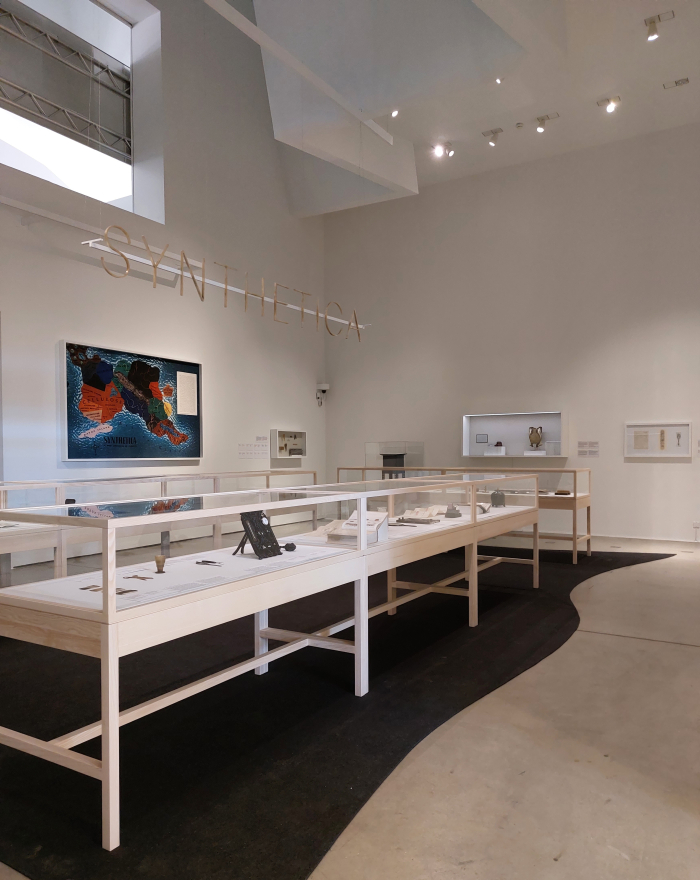
But it didn't.
For all that Bakelite helped stimulate, arguably launch, a popular passion for synthetic plastic materials, post-world War II it was quickly superseded by new materials, by ever new materials which offered production and economic advantages over the, relatively, complex and costly Bakelite, and which were more durable than the famously brittle Bakelite. And for all ever new materials that, as Plastic argues, had not only shown their usefulness and practicality in the War, but whose production, for all in the USA, had blossomed during the War into important industries; materials including, for example, nylon, saran or a PVC by the name of cocoon originally used as an anti-corrosive coating and from which George Nelson crafted his 1952 Bubble Lamp collection, one of Nelson's few solo product designs. And an Americaness of new synthetic plastics that Anna Castelli Ferrieri, co-founder and long term Artistic Director of Kartell, once defined as a primary attraction of the new materials, as a raison d'etre for employing the new materials: "plastic was equivalent with America for us. Only Bakelite came from Europe. Right? But after the war, everything plastic came to Italy from the States ... We wanted to try out what all can be made with these new materials".2 Thus, so one could argue, a further argument against Bakelite was that it wasn't American.
And ever new synthetic materials which began to be developed at an ever increasing rate to feed the ever increasing demand for economically advantageous plastics, for economically advantageous plastic products, throughout the 1950s and 1960s; a rise in the use, and popularity, of plastics driven by, and amongst other motors, the economic and population booms of the period, the easy associations with the space race (i.e. America), Pop Art sensibilities (+/- America), and also an increasing move towards convenience culture (America), towards throw-away culture (America), towards ready, instant, availability and gratification following the privations and restrictions of the War years. And that until, and as so oft in the (hi)story of plastics, the freedom, romanticism and undimmable brightness of the 1960s gave way to both the oil crises of the early 1970s with the attendant realisation that contemporary plastics were not an independent and infinitely renewable resource in their own right, or as a 1989 Friends of the Earth poster presented in Plastic states, plastics don't grow on trees. And also the increasing realisations in the early 1970s of the negative environmental and social aspects of not just plastics but of mass consumption, for all mass throw-away consumption.
Realisations made in the 1970s but which thanks to the infinite wisdom of humankind only very slowly achieved a popular appreciation.
A contemporary popular appreciation alluded to in the exhibition design by London based architect Asif Khan through a metaphoric setting of the second chapter in a space much darker, much more subdued, than the celebratory bright light which bathes the opening chapter.
And now?
A question Plastic: Remaking Our World explores in its final chapter entitled RE with its focus on examples of not only contemporary projects which RE-Dress, RE-Make, RE-Cycle, you get the idea, plastics and the problems caused by plastics but also contemporary projects which RE-Think synthetic plastic materials, for all through the development of natural based alternatives to petrochemical based synthetic materials; a presentation of RE-Imagining featuring projects such as, and amongst a great many more, the Tyre Collective who have devised a methodology for collecting microplastics emitted by car tyres and thus reducing their release into the atmosphere; Plastic Culture which attempts to utilise the cultivation of black salsify as the basis for regional bioplastic manufacture combined with regional food production; or Notpla's Ooho packaging material which is not only biodegradable, but edible.
And a final chapter Asif Khan sets in the celebratory bright light of the opening chapter.
A very pleasing continuation of the metaphor.......
.......¿But of our arrival in a bright age of untroubled fantastic plastic?
.......¿Or of a return to the blinding glow of early plastic materials?
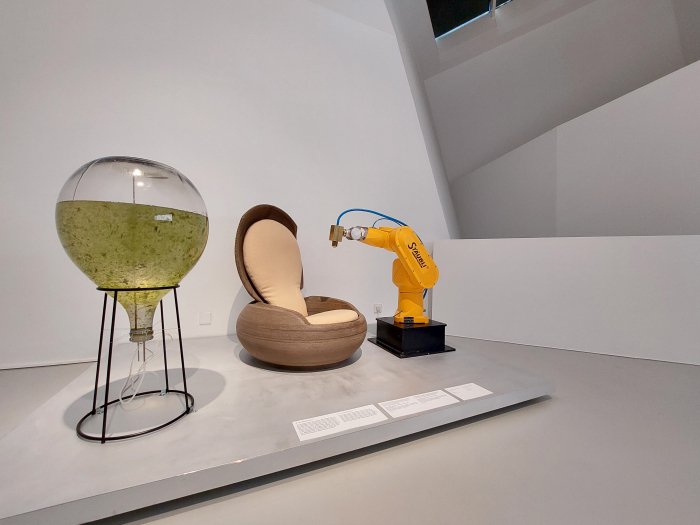
Although Plastic: Remaking Our World is being presented in a design museum, and following its run in Weil am Rhein will be shown at the V&A Dundee and maat Lisbon, the co-producers of the exhibition, and two further, design orientated, design au fait, institutions, it is an exhibition that features next to no popularly lauded plastic design objects. In place of works by the likes of Eames, Panton, Starck, et al one finds predominately relatively anonymous objects, (largely) developed by equally anonymous individuals/collectives.
Pleasingly so.
Pleasingly because the concentration on materials rather (popularly lauded) objects, on materials rather than (popularly lauded) designers, helps keep the focus away from the whats of plastics, and firmly on the whys and whens and wherefores of plastics, keeps the focus on the roles and functions of plastics in contemporary society past, present and future, keeps the focus on the necessity, or otherwise, of plastics past, present and future, on the basis of our relationships, ¿dependencies?, to and on plastics past, present and future, on the production and distribution of plastics past, present and future. And on that which the curatorial team refer to as the promise and problem of plastics; an antagonism which is very much present in Plastic, an antagonism which is a very satisfying framework in which to reflect on and consider plastics, forcing as it does one to take a more neutral, more objective, more plastic, position than that with which you, invariably, entered the exhibition. For who today doesn't have a position on plastics?
An antagonism via which to reflect on and consider plastics, a basis for viewing plastics, that Plastic helps elucidate has always been there: plastics have always stood at the threshold between promise and problem, the exploitation and subjugation, for example, by Europeans of those regions and peoples rich in the raw materials for producing the earliest naturally derived plastic materials being unmistakably flagged up under the bright, blinding, celebratory, light of the opening chapter. A colonial attitude already reappearing in our desperate search to secure supplies of the rare earths our fantastically bright digital networked future demands.
And an antagonism that Plastic further helps elucidate is very much ongoing, isn't going anywhere, will accompany us into the coming decades and centuries.
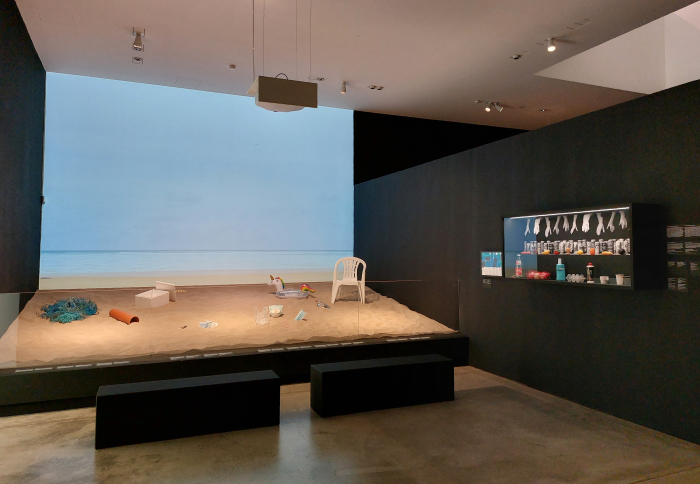
Beyond the, if one so will, primary exhibition in the Vitra Design Museum's Gehry Building Plastic: Remaking Our World is very neatly augmented and extended by a presentation of the project Precious Plastic in the Vitra Design Museum Gallery and by the installation Kalpa by Asif Khan in the Gehry Building.
The former, a project initiated in 2013 by Dutch designer Dave Hakkens which set itself the goal of advancing local level plastic recycling through developing and promoting open-source machines and processes; and a presentation of Precious Plastic which allows a very neat segue into reflections on not only plastic recycling, that most popularly known and practised remedy for combating the problems of plastics, but also into questions of the value of plastic, on the appreciation that plastic, specifically waste plastic, is a resource as much as it is a material. Yet is rarely treated as such. Why not? It's not as if it's a new position. A century and a bit ago a Louise Brigham understood discarded wooden packaging waste as a resource as much as it was a material. Plastic waste is very much a same same scenario.
The latter, a film which, more or less, starts and ends with the sea and plankton, initially giving birth to life on earth, and ultimately consuming the plastic waste of human civilisation as the basis for future life on earth; a film named after a period in Hindu and Buddhist cosmology which spans the creation, destruction and recreation of the world; and a film which, potentially on account of the location it is being presented in, or perhaps deliberately so, has unquestionably something of Charles & Ray Eames' Powers of Ten about it, certainly has something of the idea of being on a journey, of an endlessness of connections, that we are all part of an inescapable, transient, interlinked, eternal whole, that we are all insignificant yet crucial.
And a transient endless journey very much echoed in Plastic: Remaking Our World with its progression from naturally derived plastic materials to naturally derived plastic materials, via petrochemical derived plastic materials.
A journey which in RE-Turning you at the end to where you were at the beginning, just in a different place, underscores not only the essentially helical nature of human existence, that we invariably come back to where we once were albeit in a different context, but a journey which also helps underscore that considerations on the past are an essential component of our reflections on the future. Or at least should be; however, the famed inflated belief in our abilities, knowledge and cleverness that accompanies human society means we're all far, far, too busy looking forward to remember that we've come from somewhere.
Thereby making Plastic: Remaking Our World a journey, an exhibition, that is as much an admonishment as an exploration.
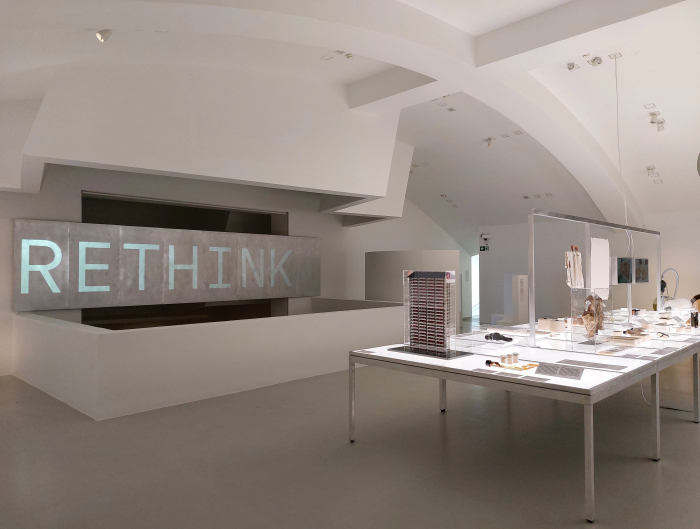
And a journey, an exhibition, that for all our claims that it features but few lauded design objects, isn't completely devoid of such; alongside works such as Eero Aarnio's Ball Chair, Panasonic's Toot-a-loop wearable radio or numerous Tupperware containers stand more contemporary projects such Jane Atfeld's RCP2 children's chair, a work crafted from recycled plastics which bequeath each example their unique colouration; Ineke Hans' REX chair which is not only produced from recycled plastics, but can be, should be, returned to the manufacturer when no longer needed; or Klarenbeek & Dros's RE-Working of Peter Ghyczy's Garden Egg, one of those paragons of 1960s plastic furniture, as a 3D printed algae-based biopolymer object.
And also features Barbie. And Ken. And Barbie Girl The Blue Danube, which is the background music to Kalpa where it elegantly and entertainingly accompanies the images, but which can be heard most everywhere in the Vitra Design Museum, meaning Plastic: Remaking Our World is very much an exhibition one waltzes ones way through.
Which isn't a complaint.
But if we did have one complaint it would be the speed which within the exhibition narrative plastics become an unsustainable social and environmental problem, a speed which while on the one hand is OK, we all know it happened, the curators aren't presenting any radical new theory, aren't turning the (hi)story of civilisation on its head; but a speed which does mean Plastic is somewhat light, pun intended, on the context of that shift, on more nuanced reflections on the how such came to be. Our, admittedly, very very cheap attempt above to make it the fault of creeping post-War American cultural colonisation can't be the only explanation, although must be one; rather there were, invariably, all manner of interacting and inter-twinning cultural, commercial, political, social et al factors at work throughout the immediate post-War decades which conditioned behaviour and positions. And better understanding how plastics became such a scourge, understanding the mechanisms that blinded us for so long to the great many, now so very obvious, problems of the promise of throw-away culture and single use plastics, rather than just accepting such became a scourge is, we'd argue, an important component of learning from the past, important in avoiding repeating our errors. And which yes, we would also extrapolate to our contemporary reflections on networked smart digital technology: if the promise of plastics could get so dark, how dark could algorithms make global society?
Not that the lack of such detailed considerations detracts from the presentation, it doesn't; and reflecting on the brevity of such does help underscore that Plastic: Remaking Our World is very much a stimulus for further research and reflections, not an end in itself.
And that not least because our relationship with, our journey with, the antagonism of, plastic materials is not at an end.
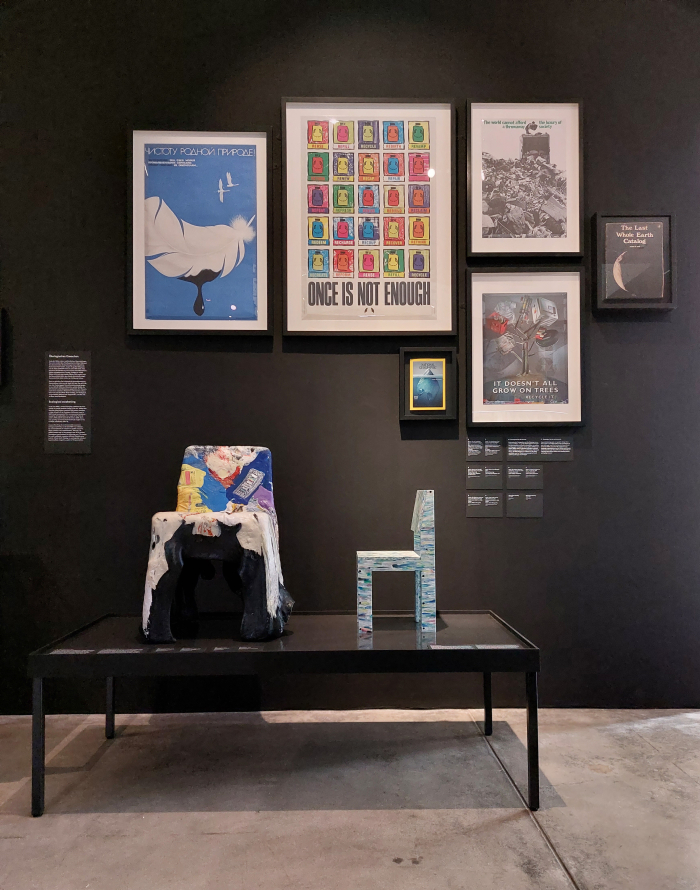
An intelligently structured and comprehensibly narrated exhibition, one which despite the organic and inorganic chemistry inherent within it remains open and accessible at all times, Plastic: Remaking Our World allows you the space and time to RE-Consider not only the (hi)story of plastic materials, but the place and role of that (hi)story in the (hi)story of human society, for all in context of the recent (hi)story of human society, and as such is an invitation to start RE-Building our troubled RE-Lationship with a plastic materials.
A RE-Lationship Plastic demands we RE-Pair: for through helping elucidate the inter-twinned (hi)stories of materials and societies Plastic allows one to better appreciate that not only is there no reason why plastic materials shouldn't be part of our futures, but that it would be an absurdity, and foolhardy, RE-Prehensible, to turn away from them, we just need to approach them with a lot less frivolity, to see beyond what we perceive as an ease without responsibility, a (¿deliberate?, ¿cynical?) misinterpretation of a conviviality and playfulness of character as an invitation to exploitation, and to treat plastic materials not only with a little more RE-Spect and decency, but with an honest long-term commitment. And also to fully understand that in our relationships with plastics, and as with so much in life be that, for example, electricity, commercial flights, professional sport, networked smart digital technology, avocados, there is an inherent antagonism, promise and problem exist side by side, and that it is up to us, individually and collectively, to maximise the promises while allowing but a minimum of problems.
And in doing such, certainly for us, Plastic tends to reinforce the argument that for all the promise of new synthetic materials, of new plastics, they on their own aren't enough, because humans are still part of the equation; and thus of equal importance to developing new materials is developing new ways of thinking, new patterns of behaviour, new forms of production and distribution, new attitudes towards consumption, new forms of global co-existence. What use biodegradable packaging if it is around an object ordered via a resource intensive app supported by an expensive social media PR campaign and delivered in 10 minutes by someone in a precarious job situation? How much water is required for new generation naturally derived plastic materials? Who benefits from the global cheap, insubstantial monobloc chair and who could, should, benefit?
Thus, and again certainly for us, as an exhibition Plastic: Remaking Our World tends to reinforce the argument that our contemporary plastics problem isn't. It's a human problem, a social problem, one could almost argue a public health problem.
Considerations on the links between plastic materials and society, between plastic materials and our world, which also allow Plastic: Remaking Our World to enable one to better appreciate that not only are materials plastic but so is our society, our world, that we, collectively and individually, made, shaped, formed our contemporary world, and that we, collectively and individually, will make, will shape, will form our future world, that we, collectively and individually, are RE-Sponsible for balancing the promises and problems of our plastic world, and that in the ongoing, transient, endless remaking of our plastic world, "life is (y)our creation".
And there is no reason why is shouldn't be fantastic.
Plastic: Remaking Our World is scheduled to run at the Vitra Design Museum, Charles-Eames-Str. 2, 79576 Weil am Rhein until Sunday September 4th.
Further information, including details on the accompanying fringe programme, can be found at www.design-museum.de/plastic
And as ever in these times, if you are planning visiting any exhibition please familiarise yourself in advance with the current ticketing, entry, safety, hygiene, cloakroom, etc rules and systems. And during your visit please stay safe, stay responsible, and above all, stay curious…….
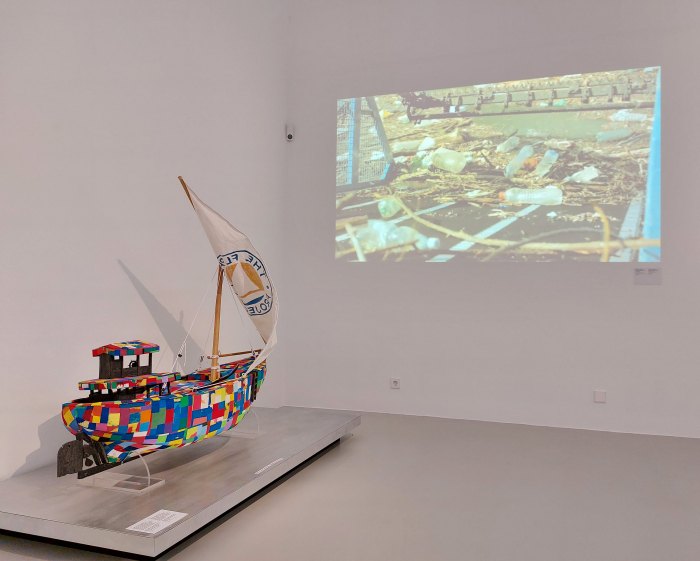
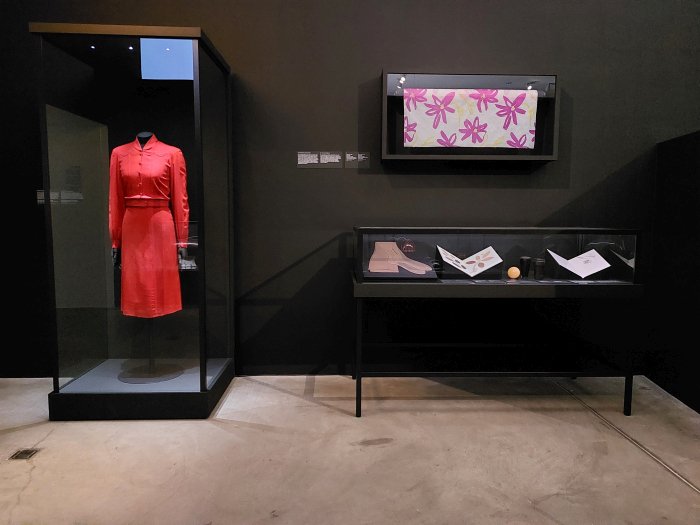
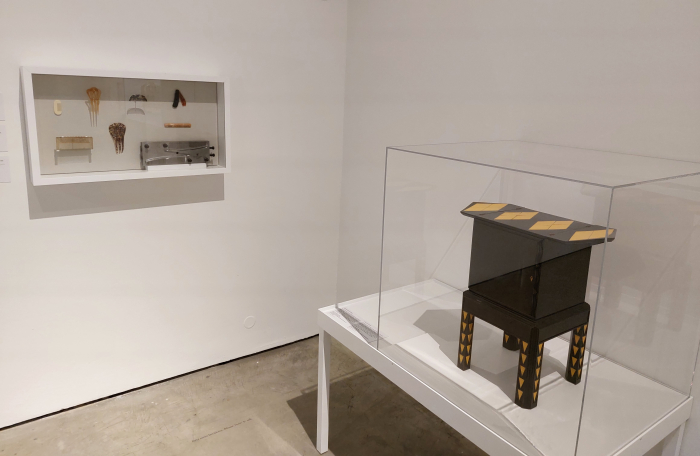
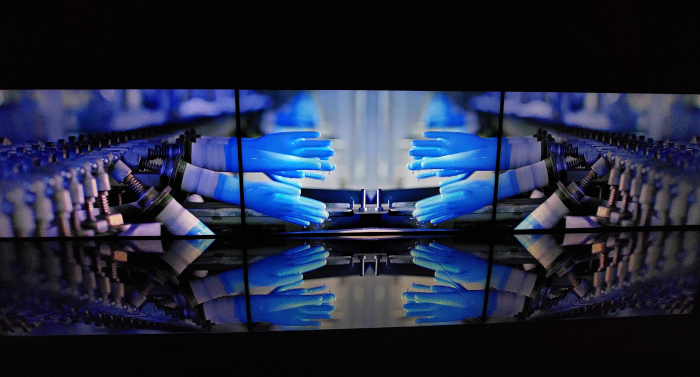
1Barbie Girl, the song from which we're quoting, isn't a celebration of plastic, and for all its addictive poppiness it is a relatively dark song that allows access to wide-ranging reflections on, for example, misogyny, sexual exploitation or sexualisation.... and we are taking the line "life in plastic, its fantastic" out of context, it is very much employed ironically as a rhetorical tool to highlight the inherent contradictions; however, in 1997 plastics were a lot less popularly controversial than they are today, and so we feel by way of a, qualified, opening gambit it is valid......if, yes, slightly deceptive.
2Anna Castelli Ferrieri in Florian Hufnagl [Ed.], Plastics + Design, Arnoldsche Verlag, Stuttgart, 1997